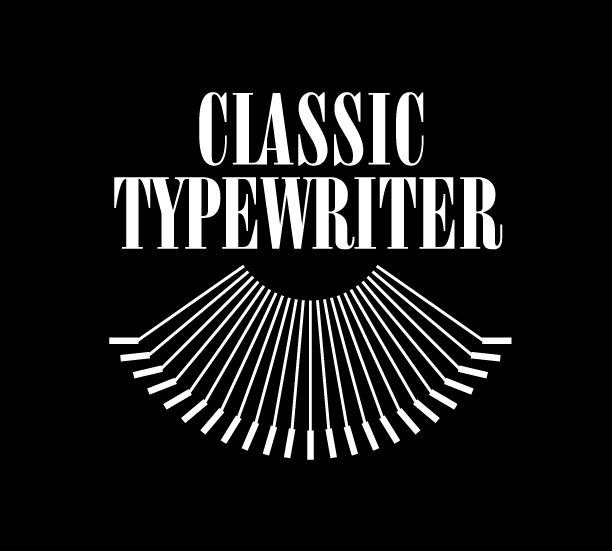History of the Hermes Typewriter
1960 Hermes 3000 with Cursive Typeface. Get yours here.
The Hermes typewriters—produced by the Paillard-Bolex company in Switzerland—are celebrated for their exceptional engineering, sleek designs, and appeal to writers and journalists worldwide. Below is an overview of their history in the 20th century, with a focus on their evolution from model to model and notable users.
1923–1930s: Foundation
Paillard-Bolex was founded in Yverdon-les-Bains, Switzerland, in 1923. Initially, they manufactured precision machinery and later ventured into typewriters, starting with large office models.
The Hermes 2 (1932) was their first notable machine, aimed at professionals needing a reliable desktop typewriter.
1930s–1940s: The Portable Era
In the 1930s, Hermes introduced portable typewriters, competing with brands like Corona, Royal, and Olympia. These lightweight and compact machines became especially popular among traveling writers and professionals.
Hermes Baby (1935)
Designed by Italian engineer Giuseppe Prezioso, the Hermes Baby became a classic in the ultra-portable category.
Known for its compact size and minimalist design, the Baby was used by John Steinbeck, Ian Fleming, and Sylvia Plath.
It was updated in 1938 with minor refinements, becoming one of the best-selling ultra-portable typewriters of all time.
Hermes Featherweight
A variation of the Baby, marketed in some regions under this name, emphasized the machine's extreme portability.
1940s–1950s: Post-War Innovations
With the post-war boom, Hermes developed increasingly sophisticated machines, blending Swiss precision with modern designs.
Hermes 2000 (1936, refined post-WWII)
A full-sized portable model, the Hermes 2000 introduced smooth typing action, a durable build, and a unique curvilinear design.
It appealed to serious writers like Eugène Ionesco.
Later iterations improved the key action and included new ribbon mechanisms.
Hermes 3000 (1958)
The Hermes 3000 succeeded the 2000 and quickly became one of the most iconic typewriters of all time.
Renowned for its curved, futuristic design, the 3000 featured advanced mechanics:
A pica/elite type selector.
A highly responsive key action.
A built-in ribbon color selector.
Improved tabulation controls.
Early models had a rounder, more elegant body, which evolved in the late 1960s into a boxier, more utilitarian design. Both versions retained the high-quality action and versatility.
Jack Kerouac, Larry McMurtry, and Tom Hanks praised and used the Hermes 3000 for its reliability and fluid typing experience.
Variants of the Hermes 3000:
First generation (1958–1968): Rounded design, light-green finish, and dial-style margin controls.
Second generation (1968–1970s): Boxier design with sharper edges and updated mechanics.
Hermes 3000 Rocket (variant): A lighter, stripped-down version aimed at ultra-portable users.
Hermes Standard 8 (1950s–1960s)
A desktop model designed for heavy-duty office use, competing with Olympia and IBM.
These were less popular among writers but remained staples in offices across Europe.
1960s–1980s: Decline of Typewriters
The rise of electric typewriters and word processors began to diminish the demand for manual machines.
Hermes Ambassador (1960s)
A high-end desktop model for professional environments, offering the most advanced features Paillard ever developed in a non-electric machine.
Electric Hermes Models:
Paillard ventured into electrics with models like the Hermes 10 and Hermes 101 in the 1960s and 1970s. However, these machines never achieved the same acclaim as their manual predecessors.
Notable Writers and Their Hermes Machines
John Steinbeck - Favored the Hermes Baby for its portability and ease of use while traveling.
Jack Kerouac - Used a Hermes 3000 to draft his later works.
Larry McMurtry - Wrote much of his Pulitzer Prize-winning novel Lonesome Dove on a Hermes 3000.
Sylvia Plath - Known to use the Hermes Baby for her poetry and personal writings.
Tom Hanks - A modern collector and enthusiast of the Hermes 3000, frequently praises its build quality.
Key Developments in the Hermes 2000 and 3000 Evolution
Hermes 2000 (1936): Rounded design, excellent mechanics, and portability.
Hermes 3000 (1958): Introduced innovations like adjustable key tension, built-in type selectors, and easier ribbon changes.
Over the decades, the design evolved from curvilinear to boxier aesthetics.
The mechanics remained consistent, maintaining its reputation as one of the smoothest and most versatile typewriters ever made.
Legacy
While Paillard ceased typewriter production in the late 20th century, Hermes typewriters remain highly collectible. The Hermes 3000 is especially revered, with many enthusiasts declaring it the finest manual typewriter ever made. These machines epitomize Swiss engineering and are enduring symbols of the golden age of mechanical writing.

